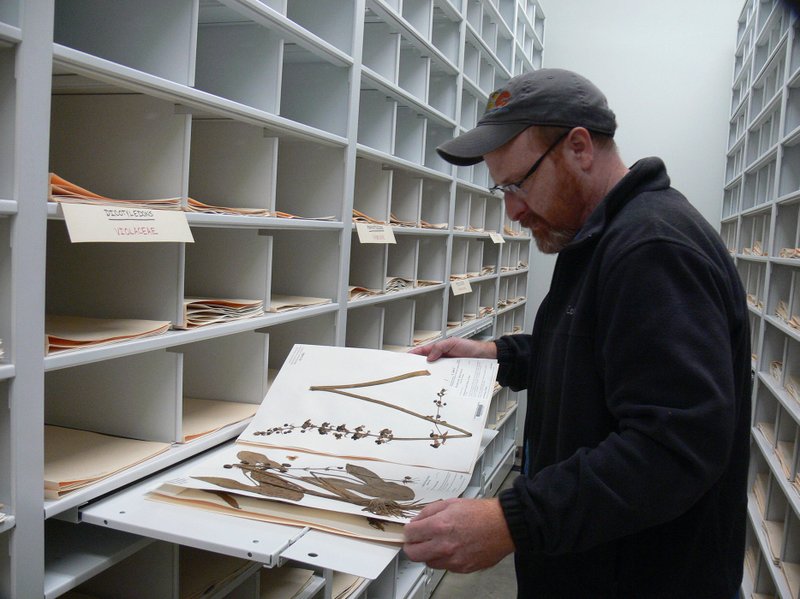Herbarium is to plants as library is to books, as museum is to artifacts, as gallery is to art.
The Natural State's herbarium is housed in the south wing of the Department of Arkansas Heritage building at 1100 North St. in Little Rock. This herbarium is a specially engineered space that occupies a 26-by-24-by-11-foot room of the Arkansas Natural Heritage Commission.
Tall rolling cabinets with many open cubbies eliminate the need for hallways. Half a million plant specimens might be kept there in the safety of a temperature- and humidity-controlled environment.
[RELATED: One volunteer created more than half of herbarium’s posters.]
Associated with the herbarium are laboratories, offices and workstations.
The herbarium is a place where botanists can go to discover what noncultivated plants grow where in Arkansas and surrounding states.
If conditions or climate changes, they can use the information about plants kept in the herbarium to measure the impact of those changes. As a reference documenting species found in particular areas, the herbarium can be used to track environmental degradation. The herbarium can inform us about the spread of exotic, pernicious plants that threaten natural areas and endanger farms and forests. State lawmakers form public policies that can affect Arkansas plants: The herbarium can help them know what grows where.
The herbarium keeps records of rare and indigenous plants in micro-habitats found only or primarily in Arkansas. This herbarium sends and receives inquiries and specimen samples to and from botanists engaged in floristic studies across the nation.
In Arkansas the work of collecting, preserving and storing plants in herbaria (the plural of herbarium) has historically been done by colleges and universities, according to Eric Sundell, Ph.D, emeritus professor of biology for the University of Arkansas at Monticello. The quality and permanence of those herbaria rise and fall with the strength and enthusiasm of the faculty at those schools.
Herbaria are dependent on continuous funding, which strapped institutions cannot always provide. Sundell knows of instances in which impressive collections of plants have been lost, destroyed or decayed because they were neglected, relegated to a moist basement or placed in file cabinets and forgotten.
The Arkansas Natural Heritage Commission's herbarium is directed by Theo Witsell, a University of Arkansas at Little Rock graduate who wrote his master's thesis about the flora of Saline County. Since 2003, with the help of a small staff and judicious use of interns and volunteers, he has built the collection of plants from 300 specimens to more than 14,000.
Currently he is engaged in a project that will affix a barcode to each specimen. These barcodes will be linked to a high-resolution photograph of each specimen. Then, any researcher or citizen in the world will be able to search and view the collection on a computer screen with the click of the mouse.
— Jerry Butler
Style on 12/31/2018
